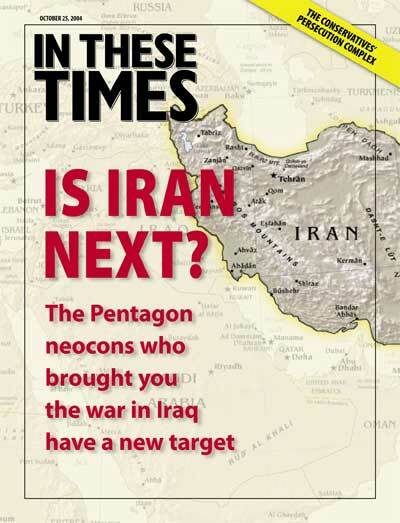Despairing for Darfur
Despite increasing coverage, the press has failed to impart the extent of the genocide
Eric Reeves

While there is growing attention to ongoing genocide in Darfur, this has not translated into either a meaningful international response or an accurate rendering of the scale and evident course of the catastrophe.
On September 18, the U.N. Security Council passed another ineffectual resolution, trimmed to avoid a Chinese veto. (China abstained from the resolution, declaring publicly it would veto any future resolution that called for sanctions against Khartoum’s National Islamic Front.) No consequences are threatened in the resolution if Khartoum refuses to rein in its brutal Arab militia forces (the Janjaweed), even though the regime promised as much to Kofi Annan on July 3. Nor is there a mechanism to secure an increase of African Union (AU) forces in Darfur, or — most critically — to strengthen their mandate to include peacekeeping and civilian protection.
This leaves a present AU contingent of just 400 men — “cease-fire” monitors, and troops to protect the monitors. This force has been stymied by Khartoum at every turn. The men are often prevented from operating because fuel is withheld from their helicopters. Various AU officers have recently gone public, describing how Khartoum has prevented the force from investigating village burnings, mass executions and other atrocities. The refusal of the AU political leaders to object publicly to Khartoum’s actions augurs poorly for anyone making forceful demands of the regime.
This is important because an AU peacekeeping force has become the default international “policy response” to the violence that is again escalating in Darfur, to the continued insecurity that confronts civilians in camps for the displaced, and to the deteriorating security of humanitarian workers. An “AU policy” is not working, and cannot succeed without massive international pressure on Khartoum. Despite much posturing at the United Nations, such pressure is nowhere in sight.
At the same time, news reports on Darfur do not provide an accurate sense of the crisis, despite an ongoing stream of reports from humanitarian and human rights groups. In its reporting, the media has used stale and unchanging figures. Current data suggests that far more than 200,000 have already died, though the figures cited in wire reports and news accounts are typically between 30,000 and 50,000. Approximately 2 million have been displaced in Darfur or made refugees in Chad, but news reports continue to speak of “more than 1 million driven from their homes.” The World Health Organization found that 10,000 are dying every month in camps to which there is humanitarian access; but elsewhere in Darfur the mortality rate is much higher.
Nor has the media reported on the near-term prospects for many hundreds of thousands of increasingly desperate civilians. The consequences of months of genocidal violence directed against African tribal populations are almost never rendered with a view to the future: food production has come to a halt, and traditional agricultural society in Darfur has been largely destroyed. There is little sign that it can be rebuilt, or that the consequences of genocidal land clearances will be reversed. Camps for the displaced are likely to become long-term human warehouses, as extreme insecurity prevails throughout rural areas. The camps and their environs are themselves clearly dangerous, as Janjaweed militia are recycled into the “police force” that is stationed in most camps.
Current humanitarian requirements for Darfur dictate that the international community provide 40,000 metric tons per month of food and critical non-food items such as medicine, shelter and water purification supplies. However, there isn’t half the transport and logistical capacity to meet this monthly need, which is likely to grow for the foreseeable future. (Further, breaks are predicted in the food “pipeline” — a shortfall in food supplies can be predicted on the basis of present resources and projected need.) Rich nations such as France, Italy, Japan, Saudia Arabia, Kuwait and the United Arab Emirates have shamelessly failed to substantially support to the aid effort.
With a woefully inadequate AU force, a meaningless U.N. resolution, and much bombast from various nations trying to substitute unctuous talk for concrete action, the future of Darfur is bleak. As the catastrophe accelerates, the international community has yet to make a meaningful response and the news media has yet to comprehensively render the genocidal realities. Our failure could not be greater.







